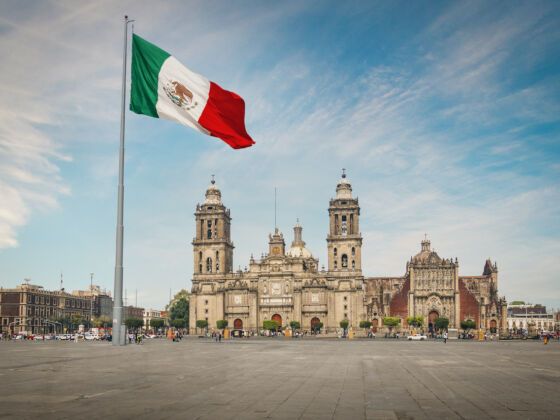Mexico City will look a little different the next time you visit. That’s because the city is actually sinking, little by little, into the earth. Much of the area was once a lake prior to the Spanish arrival in the 1500s, and though the Spanish slowly drained the water, it never quite had the chance to fully dry. Officials have known since the 1800s that parts of the city were losing elevation, but according to a recent report in Wired, researchers now believe it’s sinking faster than once thought.

Researchers Say Mexico City Could Sink 65 Feet, Forever Changing the Landscape
Modern-day Mexico City sits atop the former Aztec capital of Tenochtitlan. The Aztec capital, however, was surrounded by a large lake — noticeably absent from the modern incarnation of the city, as the region was colonized and the former Aztec capital was rebuilt into what is now North America’s biggest metropolis. Buildings, especially large ones like those in Mexico City, are obviously quite heavy. Because the city was essentially built on moist clay, the wet sediment under the city never solidified into a solid base on which to sit, and the result is a slowly sinking city as the foundations underneath the structures shift along with the slushing sediment. Mexico City isn’t the only slowly sinking city, but it is dropping incredibly fast.
The city could sink by up to 65 feet over the next 150 years, according to researchers cited by Wired. Specific areas in the vast metropolis, home to 22 million people, are sinking by up to 20 inches per year. Some areas outside the city could sink even more, potentially dropping down as much as 100 feet.
That’s bad news for city planners, government officials, and residents who have to both adapt to the changing elevation of their city and also figure out how to pay for it. Because of how slowly the sinking takes place, there’s no exact way to estimate how much it might cost to stabilize certain buildings or neighborhoods, nor even to know exactly how far down one building might go compared to its neighbor. The only thing that’s certain is that it will take a lot of concrete to patch up the city’s foundation. Even then, it may shift again in the years that follow. Inevitably, some structures may be lost. Here’s to hoping CDMX is able to retain its vibrant urban culture and historical sites.